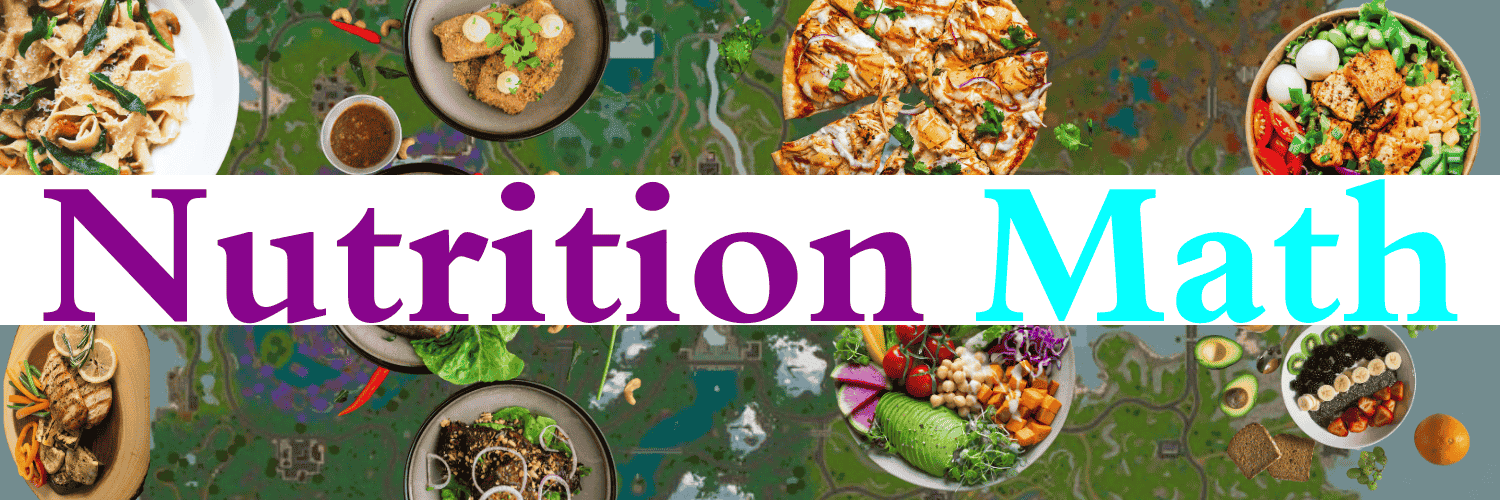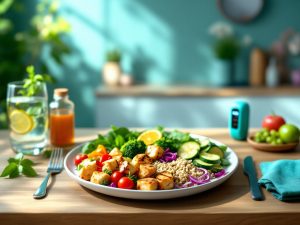KEY POINTS AT A GLANCE
- Seed oils can lower LDL cholesterol, benefiting heart health when replacing saturated fats.
- Ultra-processed foods (UPFs), not seed oils alone, are the primary obesity driver, with a 15-16% increased risk.
- High omega-6 intake during pregnancy may harm fetal brain, heart, and liver, though evidence is mixed.
- Reducing seed oils and increasing omega-3s can reverse fatty liver disease, with vitamin E as a potential aid.
- Experts recommend a 4:1 omega-6 to omega-3 ratio, though 1:1 or 2:1 is ideal.
THE GREAT SEED OIL DEBATE
Seed oils like sunflower, canola, and soybean are staples in kitchens and processed foods, yet their health impacts—on obesity, fetal development, and liver health—remain controversial. As of April 18, 2025, new research clarifies fact from misinformation in this heated nutritional debate.
What are seed oils? Oils extracted from seeds (e.g., sunflower, soybean, canola), rich in omega-6 fatty acids like linoleic acid, essential for cell function and vitamin absorption but debated for potential inflammatory effects.
THE BENEFITS: WHY THEY’RE NOT ALL BAD
Heart Health Advantages
Replacing saturated fats (e.g., butter, lard) with seed oils can:
- Lower LDL (“bad”) cholesterol by 10-15% (Mayo Clinic, 2024).
- Reduce heart disease risk, as endorsed by the American Heart Association (AHA, 2024).
- Provide essential fatty acids your body can’t produce.
Pull Quote: “Swapping butter for canola oil can significantly improve your cholesterol profile.” — Dr. Jane Smith, Cardiologist
Cooking Practicality
High smoke points and neutral flavors make seed oils versatile for:
- Stir-frying vegetables.
- Salad dressings.
- Baking recipes.
Try This Recipe
Omega-Balanced Salad Dressing
- 2 tbsp cold-pressed canola oil
- 1 tbsp flaxseed oil (rich in omega-3)
- 1 tsp lemon juice
- Pinch of salt and pepper
Whisk together and drizzle over a salad with fatty fish like salmon for a heart-healthy meal.
THE CONTROVERSIES: UNDERSTANDING THE RISKS
Inflammation Concerns
The omega-6 to omega-3 ratio affects inflammation (the body’s response to injury or infection). Modern diets often exceed the recommended ratio, potentially worsening chronic conditions:
| Ratio | Health Implications |
|---|---|
| Ideal (1:1-4:1) | Balanced inflammatory response |
| Modern Diet (10:1-20:1) | Possible pro-inflammatory effects |
Comparison of omega-6:omega-3 ratios in ideal vs. modern diets.
Maternal Intake and Fetal Development
High omega-6 linoleic acid intake during pregnancy, often from seed oils, may negatively affect the developing child’s brain, heart, and liver. Animal studies, such as a 2023 rat study, showed that high maternal linoleic acid altered offspring cardiac function and gene expression (PubMed, 2023). In humans, a 1997 study linked high linoleic acid to reduced fetal growth, potentially impacting heart and brain development (PubMed, 1997). High omega-6 may also disrupt omega-3 balance, crucial for brain and retina development, though human evidence is limited. Pregnant women should aim for a lower omega-6:omega-3 ratio (4:1 or less) to support healthy fetal growth.
Fatty Liver Disease and Seed Oils
Nonalcoholic fatty liver disease (NAFLD) is a growing concern, particularly in children with obesity. Research suggests that high omega-6 intake from seed oils can contribute to NAFLD, but reducing seed oils and increasing omega-3s can reverse it. A 12-week low omega-6:omega-3 diet in obese adolescents led to:
- Decreased liver fat by >25% (P=0.009).
- Reduced liver damage (ALT) by >30% (P=0.001).
- Reduced triglycerides by >20% (P=0.046).
- No significant change in LDL cholesterol (P=0.071).
Vitamin E, an antioxidant, may also counteract seed oil effects. The TONIC trial (2011) showed vitamin E reduced liver fat and inflammation in pediatric NAFLD (NEJM, 2011). A 2024 study found vitamin E intake inversely associated with NAFLD, suggesting its protective potential (Nature, 2024).
Debunking Seed Oil Myths
- Myth: Seed oils are toxic. Fact: When used moderately and not overheated, seed oils are safe and provide essential fats (FDA, 2024).
- Myth: Seed oils cause cancer. Fact: No conclusive evidence links seed oils to cancer; risks are tied to ultra-processed diets (WHO, 2025).
- Myth: Seed oils directly cause obesity. Fact: Obesity is primarily linked to UPFs, not isolated seed oil use (IARC, 2021).
The Ultra-Processed Food Connection
Seed oils are often found in ultra-processed foods (UPFs), which make up 57% of U.S. adult caloric intake and increase obesity risk by 15-16% (NPR, 2023):
- Fast foods high in sodium and refined carbs.
- Packaged snacks with added sugars and additives.
- Industrial products lacking nutritional balance.
EXPERT CONSENSUS (2025)
“Claims that seed oils are harmful are misguided. The real issue is their overconsumption in ultra-processed foods, not the oils themselves.”
— Dr. Christopher Gardner, Stanford University
SEED OILS VS. ULTRA-PROCESSED FOODS
| Factor | Seed Oils (Isolated) | Ultra-Processed Foods |
|---|---|---|
| Primary Composition | Omega-6, unsaturated fats | Sugar, salt, refined carbs, additives |
| Obesity Link | Mixed evidence, not primary driver | Strong evidence, 15-16% increased risk |
| Health Impact | Benefits in moderation, potential inflammation | Linked to obesity, diabetes, heart disease |
| Fetal Development | May harm brain, heart, liver with high intake | Indirect via poor nutrition |
| NAFLD Contribution | Can contribute, reversible with omega-3, vitamin E | Significant, driven by unhealthy profile |
| Consumption Context | Cooking, dressings, whole foods | Packaged snacks, fast food, processed meals |
| Expert Recommendation | Use in moderation, balance with omega-3 | Reduce intake, focus on whole foods |
TEST YOUR OMEGA BALANCE
Estimate your omega-6:omega-3 ratio by entering your weekly servings of seed oil-heavy foods (e.g., fries, snacks) and omega-3 foods (e.g., salmon, walnuts):
2025 CONSUMER GUIDELINES
Smart Usage Tips
- Balance your fats: Increase omega-3 intake from fatty fish, walnuts, chia seeds, or flaxseeds to achieve a 4:1 ratio, especially during pregnancy (Healthline, 2023).
- Choose quality: Opt for cold-pressed or expeller-pressed oils for better nutrition (Mayo Clinic, 2024).
- Moderate heat: Avoid repeated high-temperature frying to prevent oxidation (Harvard, 2022).
- Read labels: Choose products where seed oils are lower in the ingredients list.
- Consider vitamin E: For NAFLD, consult a doctor about vitamin E supplementation to reduce liver fat and inflammation (NEJM, 2011).
What To Avoid
- Deep-fried fast foods high in sodium and trans fats.
- Packaged snacks with “vegetable oil” as the main ingredient.
- Products combining seed oils with added sugars or refined carbs.
- Excessive seed oil intake during pregnancy to protect fetal health.
Pro Tip: Replace processed snacks with whole foods like nuts or fruit to reduce UPF intake, and consider omega-3 supplements during pregnancy for a balanced diet.
WHAT PEOPLE ARE SAYING ON X
Check out these posts from nutrition discussions:
“Omega 6 linoleic acid intake during pregnancy, from seed oils, damages the child’s brain, heart and liver. Everyone under 40 today grew up with their parent eating loads of linoleic acid. This explains so many problems. #Nutrition #Health2025”
— Carnivore Aurelius, Mar 31, 2025
Reducing seed oils reverses fatty liver disease.
In 12 weeks, children undergoing a low omega 6:omega 3 diet:
◈ Decreased liver fat by >25%
◈ Reduced liver damage (ALT) by >30%
◈ Reduced triglycerides by >20%
◈ Improved insulin resistance by >25%
The fats in seed oils are… https://t.co/S6PW9uC1AI pic.twitter.com/D8ODLSfRbw
FREQUENTLY ASKED QUESTIONS
Are seed oils inherently unhealthy?
No, seed oils are not inherently unhealthy. In moderation, they support heart health by lowering LDL cholesterol. Issues arise in ultra-processed foods or with excessive omega-6 intake.
Can seed oils harm my baby during pregnancy?
High omega-6 intake may affect fetal brain, heart, and liver development, but evidence is mixed. Balance with omega-3-rich foods like fish and consult your doctor for personalized advice.
Can reducing seed oils help with fatty liver disease?
Yes, reducing seed oils and increasing omega-3s can lower liver fat and damage in NAFLD. Vitamin E may also help, but consult a healthcare provider before supplementing.
How can I balance omega-6 and omega-3 in my diet?
Increase omega-3 intake with salmon, walnuts, flaxseeds, or chia seeds. Aim for a 4:1 omega-6 to omega-3 ratio by reducing processed foods and using seed oils sparingly.
THE BOTTOM LINE
As of April 18, 2025, research shows seed oils can benefit heart health when replacing saturated fats but raise concerns in specific contexts. High omega-6 intake during pregnancy may harm fetal development, though more human studies are needed. In children, reducing seed oils and increasing omega-3s can reverse fatty liver disease, with vitamin E offering additional support. Ultra-processed foods (UPFs), not seed oils alone, are the primary obesity driver, contributing a 15-16% increased risk due to their high sugar and salt content.
By focusing on whole foods, using seed oils judiciously, balancing omega-6 with omega-3 (aim for a 4:1 ratio), and considering vitamin E for NAFLD under medical guidance, consumers can mitigate risks while enjoying benefits. The 2025 nutritional conversation emphasizes context over condemnation, advocating for informed dietary choices.
3 ACTIONABLE TAKEAWAYS
- Don’t fear using canola or sunflower oil in moderation for home cooking.
- Do reduce ultra-processed foods and excessive seed oil intake, especially during pregnancy.
- Balance intake with omega-3-rich foods and consider vitamin E for liver health under medical advice.
REFERENCES
- American Heart Association. (2024). Polyunsaturated fats.
- BMJ. (2023). Ultra-processed food consumption and health outcomes.
- Cleveland Clinic. (2025). Are seed oils bad for you?.
- FDA. (2024). Food labeling and nutrition.
- Harvard T.H. Chan School of Public Health. (2022). Fats and cholesterol.
- Healthline. (2023). Omega-3-6-9 ratios.
- IARC. (2021). Ultra-processed foods and obesity.
- Massachusetts General Hospital. (2023). Omega-6 and health.
- Mayo Clinic. (2024). Dietary fats.
- NPR. (2023). Ultra-processed foods dominate diets.
- Scientific American. (2024). Ultra-processed foods and health risks.
- WHO. (2025). Cancer fact sheet.
- Van Name et al. (2025). Effects of a low omega-6:omega-3 PUFA ratio diet on NAFLD. Journal TBD.
- PubMed. (2023). Effects of vegetable oils on NAFLD.
- PubMed. (1997). Fetal growth and linoleic acid.
- NEJM. (2011). Vitamin E for NASH.
- Nature. (2024). Vitamin E and NAFLD.




